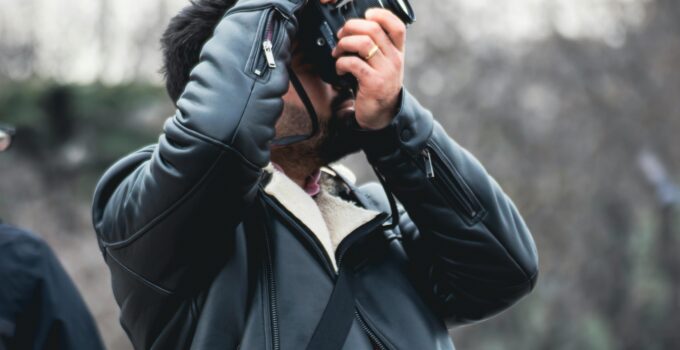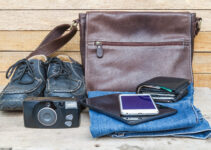How big should a camera bag be? Are you tired of cramming your gear into a bag that feels too small or lugging around a bulky bag that’s half-empty?
Finding the right size for your camera bag is crucial for comfort and functionality, but it’s not always easy to determine.
In short, the ideal camera bag size depends on your equipment and shooting style.
A bag that’s too small may not fit all your gear, while a bag that’s too large can be cumbersome and inconvenient.
Consider the number of cameras, lenses, accessories, and personal items you typically carry to determine the right size for you.
Here what is designer camera bag?
Curious about the best camera bag size for your needs? Join us as we delve deeper into this topic with insights from renowned photographers and gear experts.
Discover how to choose the perfect camera bag size that strikes the ideal balance between portability and capacity, ensuring you’re always ready to capture that perfect shot.
How big should a camera bag be?
The ideal size for a camera bag depends on your equipment and needs.
For a basic setup with a camera body, one or two lenses, and accessories like batteries and memory cards, a small to medium-sized bag would suffice. This type of bag is compact and easy to carry for everyday use or short outings.

If you have a more extensive kit with multiple lenses, a tripod, a flash, and other accessories, you’d need a larger bag.
A medium to large camera bag offers ample space for organizing and protecting your gear, making it suitable for travel or professional shoots.
Consider factors like comfort, durability, and versatility when choosing a camera bag size.
It should comfortably accommodate your equipment while remaining portable and convenient for your photography adventures.
How big size should a professional photographer use?
A professional photographer typically requires a larger camera bag to accommodate a comprehensive range of equipment.
The size of the bag will depend on the specific needs and shooting style of the photographer.
For a professional photographer, a medium to large camera bag is often preferred.
This size allows for the storage of multiple camera bodies, several lenses (including telephoto and wide-angle options), a flash unit, a tripod, batteries, memory cards, filters, and other accessories.
A larger bag provides versatility and flexibility for different photography assignments, whether it’s a studio shoot, outdoor event, or travel photography.
It ensures that all essential gear is organized, easily accessible, and well-protected during transportation.
Additionally, a professional-grade bag with durable materials and customizable compartments can offer added convenience and reliability in demanding shooting environments.
How big size should a amature photographer use?
How big size should a beginner photographer use?
For a beginner photographer, a small to medium-sized camera bag is typically recommended.
This size is ideal for carrying essential equipment while still being manageable and easy to carry around, which is important for someone just starting in photography.
A beginner photographer’s kit often includes a camera body, one or two lenses (such as a kit lens and a prime lens), spare batteries, memory cards, lens cleaning kit, and perhaps a small tripod or monopod.
A compact or medium-sized camera bag can comfortably hold these items and provide adequate protection for them.
Additionally, a smaller bag encourages beginners to prioritize essential gear and avoid overpacking unnecessary items, helping them stay focused on learning photography techniques rather than getting overwhelmed by too much equipment.
As their skills and equipment collection grow, they can then consider upgrading to a larger bag to accommodate more gear.
Does that really help how big your camera bag be?
9 things to know before buying a camera bag
How big is “too big” for a camera bag?
How heavy is your camera bag when taking on a trip?
My camera bag for trips typically weighs around 10-15 pounds (4.5-6.8 kilograms), depending on the equipment and accessories I carry.
This weight includes the camera body, a couple of lenses (such as a standard zoom and a prime lens), spare batteries, memory cards, a small tripod or monopod, lens cleaning kit, and a few personal items like a water bottle and snacks.
I aim to strike a balance between having essential gear for various shooting scenarios and keeping the bag lightweight enough for comfortable travel.
Distributing the weight evenly within the bag and using padded straps help reduce strain on my shoulders and back during long walks or hikes while exploring new locations.
Overall, considering weight is crucial to ensure that the camera bag remains manageable and doesn’t become a burden during travel, allowing me to focus more on capturing memorable moments.
Hikers: how heavy is your pack?
How much does your camera bag weigh?
My camera bag typically weighs between 5 to 10 pounds (2.3 to 4.5 kilograms), depending on the specific gear I carry for a particular shoot or outing.
This weight includes the camera body, one or two lenses, spare batteries, memory cards, lens cleaning kit, and a small tripod or monopod.
I prioritize keeping my camera bag lightweight to ensure ease of portability and comfort during photography sessions or travels.
Carrying a lighter bag reduces strain on my shoulders and back, allowing me to focus more on capturing moments without distractions.
I achieve this by choosing compact and versatile gear, utilizing lightweight materials in the bag itself, and organizing the contents efficiently to maximize space and minimize unnecessary bulk.
Overall, maintaining a manageable weight for my camera bag enhances my overall photography experience and mobility during shoots.
How many bags do you carry & how much does it weigh
During a typical outing or travel, I usually carry two bags: a camera bag and a backpack or daypack for personal items.
The camera bag contains my photography gear, including the camera body, lenses, accessories, and a tripod, while the backpack carries essentials like water, snacks, a jacket, a map or guidebook, and any personal items such as a wallet, phone, and keys.
The combined weight of both bags typically ranges from 10 to 20 pounds (4.5 to 9 kilograms), depending on the amount of gear and supplies I carry.
I aim to keep the total weight manageable to ensure comfort and mobility while exploring or shooting photographs.
Distributing the weight evenly between the two bags and using padded straps or a waist belt helps reduce strain on my body during extended periods of carrying them.
Related faq’s
What is the average size of a camera bag?
The average size of a camera bag can vary but is typically around 10 to 12 inches in length, 6 to 8 inches in width, and 4 to 6 inches in depth.
This size allows the bag to comfortably accommodate a camera body, one or two lenses, accessories like batteries and memory cards, and sometimes a small tripod or monopod.
However, there are also larger camera bags available for photographers with more extensive gear collections, and smaller bags designed for compact mirrorless cameras or minimalist setups.
How do I know my bag size?
To determine the size of your camera bag, measure the internal dimensions of the bag using a tape measure or ruler.
Measure the length, width, and depth of the main compartment where your camera and lenses will be stored.
Consider the size of your camera body and the number of lenses and accessories you plan to carry to ensure they will fit comfortably in the bag.
Additionally, check the manufacturer’s specifications or product description, as they often provide information about the bag’s size and capacity to help you make an informed decision.
Conclusion:
In conclusion, the ideal size of a camera bag depends on your specific needs and the amount of photography equipment you have.
A small to medium-sized bag is suitable for basic setups with a camera body, a couple of lenses, and essential accessories.
For professionals or those with extensive gear collections, a medium to large bag with customizable compartments offers ample space and organization.
Consider factors like comfort, durability, and portability when choosing a camera bag size to ensure it meets your requirements and enhances your photography experience.







